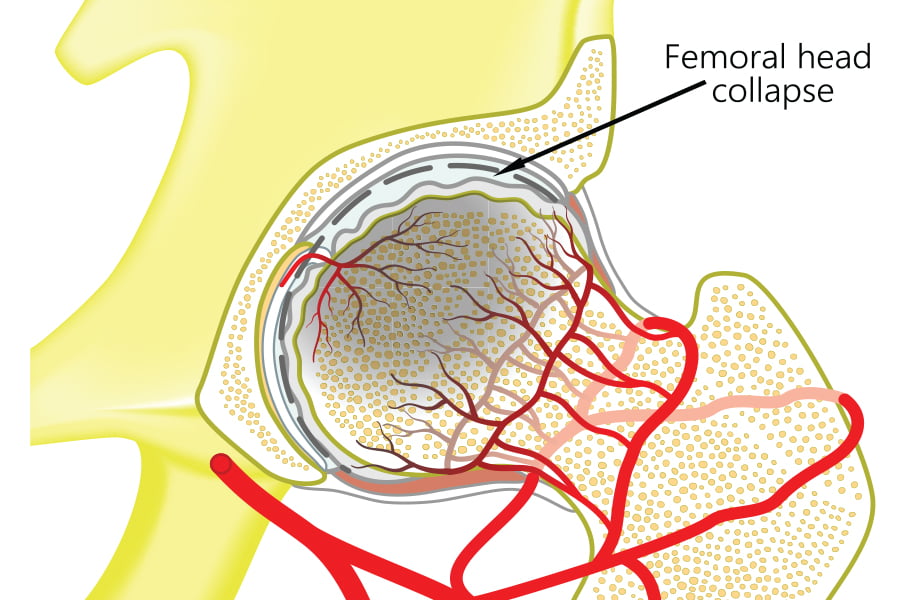
Avascular necrosis of the hip occurs when the blood supply to the hip joint is damaged. Bones are living tissue, and like all living tissue they rely on blood vessels to bring blood to keep them alive. Most living tissues have blood vessels that come from many directions into the tissue. But some joints of the body have only a few blood vessels bringing blood into the joint. The hip joint is one of those.
Avascular necrosis of the hip is also referred to as osteonecrosis, which means “bone death.” In living bone, the bone cells are constantly repairing the wear and tear that affects bone tissue. If the repair process stops, the bone begins to weaken, just like rust affects the metal structure of a bridge. Eventually, like the rusty bridge, the bone structure begins to collapse.
In the ball and socket joint of the hip, the ball portion collapses and begins to flatten. Then the ball no longer fits perfectly into the socket. Like two mismatched pieces of machinery the joint begins to wear out. This leads to osteoarthritis of the hip joint, and hip pain.
There are several possible causes for avascular necrosis of the hip. Injury to the hip, such as a fracture or a dislocation can damage the blood vessels. Some medications are known to cause AVN, corticosteroids taken on a daily basis can be a problem. Or corticosteroids taken in conjunction with statin drugs present a greater risk of developing AVN. Any lifestyle choice that causes damage to blood vessels, such as smoking and alcohol abuse, can lead to AVN. Other diseases or conditions that associated with an increased incidence of avascular necrosis of the hip include leukemia, sickle cell diseases, and HIV infection.
Diagnosis of AVN is through examination, x-rays and MRIs. Treatment will depend on the advancement of the disease. Several operations have been designed to increase the blood supply to the femoral head if it has not yet begun to collapse.
When avascular necrosis of the hip has reached advanced stages, it is treated with artificial hip replacement. If the bone defect does not extend into the hip socket, a hip resurfacing procedure may be considered. Otherwise a total hip replacement will be performed.
For more information on this subject, call The Zehr Center for Orthopaedics at 239-596-0100 or visit www.zehrcenter.com. The information contained herein is compiled from a variety of sources. It may not be complete or timely. It does not cover all diseases, physical conditions, ailments, or treatments. The information should NOT be used in place of a visit with your healthcare provider, nor should you disregard the advice of your health care provider because of any information you read on this topic.